
Released October 26, 1999
The late 90s was a great time to be a fan of pro wrestling and especially pro wrestling video games. World Championship Wrestling had been riding high with its New World Order stable, a collection of heels (bad guys) largely culled from the roster of competitor the World Wrestling Federation. It was a meta angle as it blurred the lines for fans between what was real and what was fake. When performers Scott Hall and Kevin Nash arrived for Monday Nitro it was unclear if they were still employed by the WWF. Of course they were not, but it was a surreal moment in wrestling history.

If you saw this before your wrestling game you knew you were in for a good time.
1998 was the apex of the Monday Night Wars. WWF’s Raw is War had been on television for years before it was challenged by WCW’s Monday Nitro. Eager to be the king in the ratings war, WCW went all out to topple WWF by signing major stars away from the brand and occupying the same timeslot as Raw. Eventually, WCW added a third hour to its broadcast making it start a full hour before Raw. Fans would tune into Nitro at 8 EST, and if the product was good enough they might just hang around until 11 ignoring Raw all together. This was the era before DVR and on demand viewing so wrestling fans had to make a choice each week and stick with it, or tape one of the programs.
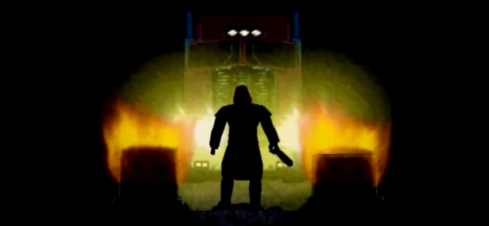
The intro to this game is some bonkers stuff.
1997 was the nadir for WWF. The stars Vince McMahon was able to hang onto and invest in were failing him. Shawn Michaels had injuries and substance abuse problems which kept him off television for long stretches. He also didn’t get along with Vince’s chosen top guy, Brett Hart. So paranoid was McMahon that he would lose Hart to WCW like he had so many others that he signed him to a massive 20 year deal. Vince then had to back out of the deal, either because he couldn’t afford it or felt he had made a mistake, leading to the infamous Montreal Screwjob and another WCW defection.
Basically saving WWF was the unexpected rise of Stone Cold Steve Austin. Cast aside by WCW, Austin took his talents to Extreme Championship Wrestling where he did enough on the mic to get WWF’s attention. He initially was wasted on the roster as The Ringmaster, but when times got dark and things desperate, WWF basically turned to its talent and told them to “go to work.” Having creative freedom allowed performers to show off their real talents. Some got over, some did not, but certainly the biggest benefactor was Austin. Unfortunately, his ascension was put on pause when an accident at Summerslam 97 caused him to miss time with a serious neck injury. By early 1998 though, Austin was the new champ and WWF was back in the ratings lead.
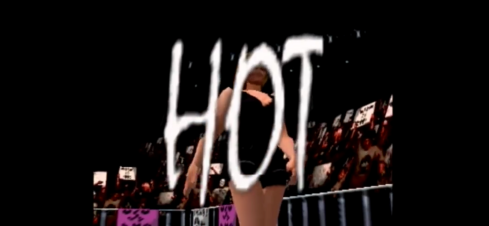
Late 90s wrestling was all about sex appeal, even in polygons.
WCW’s counter to the rise of Austin was another fresh face. Bill Goldberg somewhat looked the part of Stone Cold: black trunks, black boots, goatee, though his character was quite different. Goldberg was a no nonsense battering ram who took down all challengers usually in less than 2 minutes. He basically had two moves, but they were two moves that looked pretty nice on TV. Crowds went nuts for him, and so desperate was WCW to maintain its hold on the ratings crown that it pit Goldberg vs Hollywood Hogan on cable television for the World Heavyweight Championship rather than using that match to sell a Pay-Per-View.
That was basically WCW’s last hurrah. After that it was mostly all downhill, but arriving at retail during Goldberg-mania was WCW/nWo Revenge. The sequel to WCW vs nWo – World Tour, Revenge was a much anticipated wrestling simulation for the Nintendo 64. The video game landscape had become just as competitive as the television one and WCW was the clear front-runner, until 1999, much like the shows. THQ was the license holder for WCW and while the games it produced for Sony’s PlayStation were pretty lackluster, the N64 games were much celebrated. By comparison, Acclaim had held the WWF license for the better part of a decade and was struggling to remain relevant. The games of the 16 bit era had been okay, but were extremely similar to each other and had grown quite stale. Acclaim would try to revamp its process with WWF Warzone, but most felt that WWF had the inferior game when compared with WCW.

This was the video game debut for Goldberg, who has looked better.
THQ turned to the AKI Corporation and Asmik Ace Entertainment for development of its N64 WCW games. AKI would come up with a tremendously accessible system that it would use for its flagship Virtual Pro Wrestling series in Japan and adapt it for WCW games in the US. The approach to a match was fairly simple. Players controlled their chosen wrestler with the controller’s d-pad, as opposed to the analog stick, and had two primary modes of attack: strikes and grapples. Both were context-sensitive in that pressing the strike button resulted in a quick strike, while holding it down resulted in a slower, but stronger, attack. With the grapple, wrestlers would enter the classic tie-up position. Whoever initiated the grapple would then select a move. Pressing either the grapple or strike button resulted in a move, as would pressing one in conjunction with a direction on the D-pad allowing for each wrestler to have a wealth of available maneuvers. Reversals were possible with the R button and a key to mastering the game’s CPU. The C-buttons were used for running, opponent selection, and entering/exiting the ring or ascending a turnbuckle. It was easy to learn and pick-up and proved quite addicting.
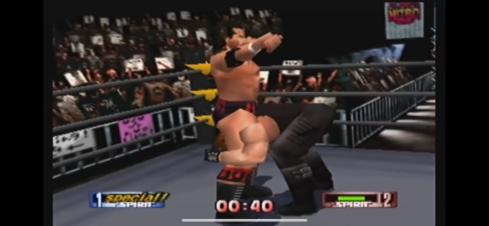
AKI really injected some personality into the game giving wrestlers like Scott Hall their signature finishing maneuvers instead of something more generic.
World Tour, released in 1997, was a blast, but its clear shortcoming was the lack of bells and whistles. Revenge largely sought to rectify this with a refreshed roster and an injection of personality. The new arenas were modeled after the actual television arenas and looked pretty good, all things considered. AKI was also able to add-in all of the major championships including minor titles like the Cruiserweight belt and Television title. There was a lengthy intro added to the game, and the whole presentation just screamed WCW.
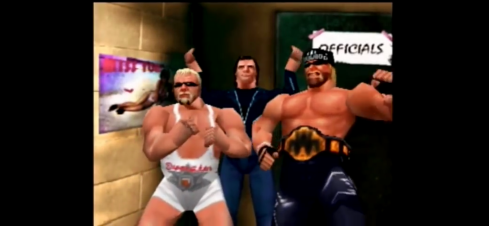
The visuals get the job done in that you mostly know who is who just by looking at them, but they’ve certainly aged.
Visually, the game also looks better. Wrestlers are easy to distinguish from one another and if you were at all familiar with the television roster then you knew who each character was. Though it should be pointed out, this was never a great looking game even in 1998. It was functional, as the characters are quite blocky and the faces a bit weird. There was at least a difference in height between the really tall and the not quite as tall, though the cruiserweights in general look a bit too large compared with most. Technological limitations also prevented the game from including entrance music so everyone just enters to a generic theme. Entrances are also largely limited to the talent just doing their taunt on the way to the ring and upon entering. Some enter with a manager or valet, which is a nice a touch. There’s a stable system in place too so there’s nWo red and white as well as Raven’s Flock. Affiliated wrestlers will sometimes receive help from a comrade during a match too without the penalty of a disqualification.
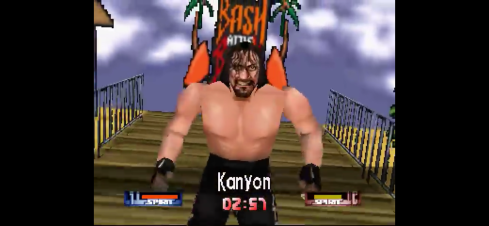
Allies will sometimes rush to the aid of a buddy, which can get a bit annoying when it happens every match in your opponent’s favor.
In the ring, everyone basically moves at the same speed and with the same weight. Super heavyweights can’t ascend a turnbuckle, but nothing will stop other wrestlers from suplexing them. The whole goal of a match is to ware your opponent down and get the crowd on your side. Once your spirit meter fills you’ll gain access to a Special status for a brief moment of time allowing you to unleash your wrestler’s signature move, or steal your opponent’s. Usually there’s enough time to hit your move twice, unless your wrestler has a long animation for it. Sometimes just hitting this special move is enough to score a pinfall, but most of the time just one won’t do unless your opponent is on the ground and twitching. Repeated blows to the head will also bust your opponent open, no weapons needed, which is a nice badge of honor. Taking the action outside the ring opens up the possibility to yank weapons out of the crowd. They’re not nearly as effective as they would be on TV, but it’s still fun to assault your opponent with a chair or baseball bat.

Some guys even start matches with weapons. Lucky for them, there’s no DQ.
The in-ring action is all around solid, but does show its age. Collision detection was always a problem for this game. It’s not terrible, but there are moments where characters will partially pass through each other and you’ll have to time your attacks to avoid invulnerable animations your opponent may be in. There are no running grapples, and submission moves aren’t particularly effective making guys like Brett Hart and Chris Jericho a little less fun to use. And as simple and effective this gameplay is, it can be argued it’s not particularly realistic when compared with the televised product. How many matches consist of dozens of collar and elbow tie-ups leading to moves? None, really.
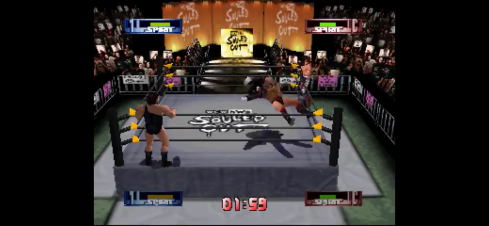
Match types aren’t very robust and are limited to singles, tag team, battle royal, and handicap matches.
As far as game modes and match types go, Revenge definitely feels lacking and it always has. World Tour wasn’t robust either, and it’s a shame Revenge didn’t really do anything to rectify that. You basically have your choice of Championship and Exhibition modes. In Championship, you select the title you want to go after and then battle through 9 grapplers and become champion. It’s fine, but can get a little annoying as the CPU often gets outside assistance which lengthens the matches without making them really much harder. The order and grapplers faced are also a bit random as I encountered Sting in the US Title hunt when one would assume he’d be in the World Heavyweight Championship ranks. The opponents get harder as you go along, though what makes an opponent harder than the next is largely just how successful they are at reversing moves. This is something that always annoyed me with AKI games as it’s not something you have any control over, you just have to answer with reversals as well and hope to get lucky that your moves will stop being reversed.
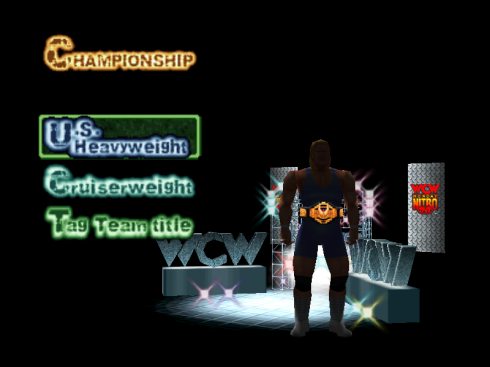
You can go after basically all of the major titles, but you have to win the minor belts first before the bigger ones open up.
In the exhibition mode, you have the option to compete in single and tag matches and there’s also an option for Special matches. These are just the battle royal and handicap matches. Battle royals are fine and most fun with four human players in a local setting. You can select as many as 40 entrants, but are limited to just 4 in the ring at once. Handicap is just two on one or three on one, if you like a challenge. When it comes to match types, it’s more about what’s missing. It’s kind of weird to have the ability to do a battle royal, but not a triple threat. Cage matches were also becoming a common match type in games so there being none in this game was a disappointment. And on TV, hardcore elements were all the rage so a lack of things like tables was always disappointing, though at this point in time ladder matches had yet to become a thing in games. This game also came before Create-A-Wrestler was a standard feature, but you can at least edit the attires of the existing guys.

In terms of visuals, the arenas hold up better than expected.
WCW/nWo Revenge is a superior game to its predecessor. It was also better than WWF Warzone even if that game had more match types. It also had a shorter shelf life though since it’s a game that really relies on the gameplay alone. And it’s a good thing that an individual match against the CPU or a friend is quite fun, but there does come a time when you decide you can only topple a champ so many times. Back in 98, it was fun to try and keep up with the TV product so when Kevin Nash beat Goldberg at Starrcade 98 you could go into the game and battle your way with Nash to the title. Of course, game development being what it is, there were plenty of missing wrestlers. In 98, the biggest omissions were Ric Flair and The Warrior. It’s still weird to have a WCW game without Flair, though from a 2020 perspective I can’t say I miss Warrior since his WCW run was terrible. It’s a harder play through now since it’s missing so much of what modern games have. There’s still a lot of nostalgic fun in coming back to this old, flawed, yet beloved gameplay system. And if your nostalgia for wrestling in 1998 is slanted towards WCW, then this is the game for you.

Over 20 years later, this game is still the best celebration of WCW you’re going to find in video game form.
If your nostalgia is for WWF though, then you’re probably playing either WrestleMania 2000 or No Mercy. Not long after Revenge was released, THQ’s agreement with WCW came to an end and WWF pounced. It was a crazy time as Acclaim still had a game in development in WWF Attitude. That game would arrive on the PlayStation in July 1999 with the N64 version following in August. Just a few months later came the AKI developed WrestleMania 2000 giving Attitude an incredibly short run of just two months as the newest WWF sim on the N64. WWF basically cannibalized one game in favor of another, but that’s how popular these AKI games were. It’s something we’re not likely to ever see again. Hopefully AEW can land a killer licensing agreement with someone so we have more options for wrestling games. For now, we’ll always have 1998-2000.

Leave a comment